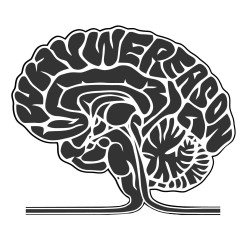Creativity & Childhood
Growing up has its benefits. As we age, our intellect sharpens and willpower strengthens. We come to control out thoughts and desires; we identify goals and hone our skills.
However, growing up comes at a cost: we lose our natural desire to discover and invent; we become more self-conscious and less willing to fail. A study conducted between 1959 and 1964 involving 350 children found that around 4th grade our tendency to daydream and wonder declines sharply. In other words, Picasso was right: “Every child is an artist. The problem is how to remain an artist once we grow up.”
Age doesn’t necessarily squander our creative juices – creative geniuses like Steve Jobs and Steven Spielberg somehow managed to maintain a sense of wonderment through their adult years – but when we make the leap from elementary school to middle school our worldview becomes more realistic and cynical. The question is: what did Jobs and Spielberg do differently? How do we maintain our naiveté?
A study conducted several years ago by Darya Zabelina and Michael Robinson of North Dakota State University gives us a simple remedy. The psychologists divided a large group of undergraduates into two groups. The first group was giving the following prompt:
You are 7 years ago. School is canceled, and you have the entire day to yourself. What would you do? Where would you go? Who would you see?
The second group was given the same prompt minus the first sentence. This means they didn’t imagine themselves as seven years olds – they remained in their adult mindset.
Next, the psychologists asked their subjects to take ten minutes to write a response. Afterwards the subjects were given various tests of creativity, such as inventing alternatives uses for an old tire, or completing incomplete sketches. (As well as other tasks from the Torrance test of creativity.) Zabelina and Robinson found that, “individuals [in] the mindset condition involving childlike thinking… exhibited higher levels of creative originally than did those in the control condition.” This effect was especially pronounced with subjects who identify themselves as “introverts.”
What happens to our innate creativity when we age? Zabelina and Robinson discuss a few reasons. The first is that regions of the frontal cortex – a part of the brain responsible for rule-based behavior – are not fully developed until our teenage years. This means that when we are young our thoughts are free-flowing and without inhibitions; curiosity, not logic and reason, guides our intellectual musings. The second is that current educational practices discourage creativity. As famed Ted speaker Ken Robinson said: “the whole system of public education around the world is a protracted process of university entrance. And the consequence is that many highly talented, brilliant, creative people think they’re not, because the thing they were good at at school wasn’t valued, or was actually stigmatized.”
No matter the reasons, the authors stress, adults can still tap into their more imaginative younger selves. The useful cognitive tools that come with adulthood tempt us to inhibit our imagination from wondering about the impossible, but as so many intellectuals and inventors have remarked throughout history, challenging what’s possible is a necessary starting point. As Jobs said, “the people who are crazy enough to think they can change the world, are the ones who do.”
To be sure, it’s often beneficial to approach life with an adult mindset – you probably don’t want to get too creative with your taxes – but when it comes to using your imagination, thinking of oneself as a child facilitates more original thinking.



Trackbacks & Pingbacks